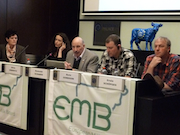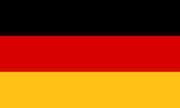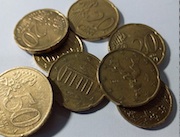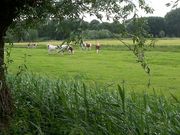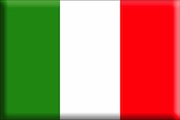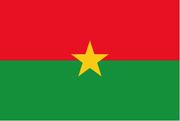EMB Newsletter April 2016
Newsletter as PDF
Contact
EMB - European Milk Board asbl
Rue de la Loi 155
B-1040 Bruxelles
Phone: +32 - 2808 - 1935
Fax: +32 - 2808 - 8265
Dear dairy farmers and interested parties,
A year after the end of quotas - a fiasco for European milk producers
April 1 marked a year since Dairy Produce Quota Regulations, the technical term for milk quotas, were abolished by policy-makers. This step towards liberalisation of the EU dairy market has emerged as a monumental error in this short period of time.
This decision has had a dramatic effect, simply in the short-term, on the dairy market as also on milk producers and their income. Farmers are using this new "freedom" to produce milk like there is no tomorrow. The market has been unable to absorb the additional volumes for a while now. While volumes in storage are skyrocketing, farm-gate milk prices are in free-fall. This is not just the case in Europe, but all over the world! Representatives from dairies are already talking about prices falling below the 20-cent limit quite soon. At the end of the day, this will put the livelihood of innumerable farmers on the line. It is already clear that milk producers in the EU have seen their earnings drop by 30 billion euros in 2015 and 2016 as compared to the previous two years. Back then, milk prices were more or less viable in all countries, even if they were far from good.
The EMB is already holding talks with important policy-makers to promote the implementation of - where appropriate - temporary, binding cuts in milk production. This process will most definitely be accompanied by further bold, public actions by European dairy farmers. The days of long-winded experiments are over; it is now time for effective action.
Romuald Schaber (EMB President)
Agriculture Council backs voluntary production cuts – but only an insufficient version of it
Situation in Germany
The European Milk Market: Raise your milk price by two eurocents per kg by investing 0.34 eurocents towards cessation - or spend one eurocent to obtain a price increase of 5 eurocents
Phosphate Rights in the Netherlands
The European Commissioner and the Ministers "live on another planet"
Thank you! - Donation drive for micro-dairy in Burkina Faso
Impressum
European Milk Board asbl
Rue de la Loi 155
B-1040 Bruxelles
Phone: +32 2808 1935
Fax: +32 2808 8265
E-Mail: office@europeanmilkboard.org
Website: http://www.europeanmilkboard.org

